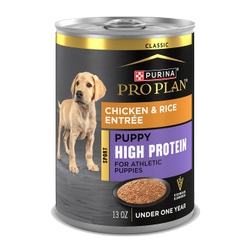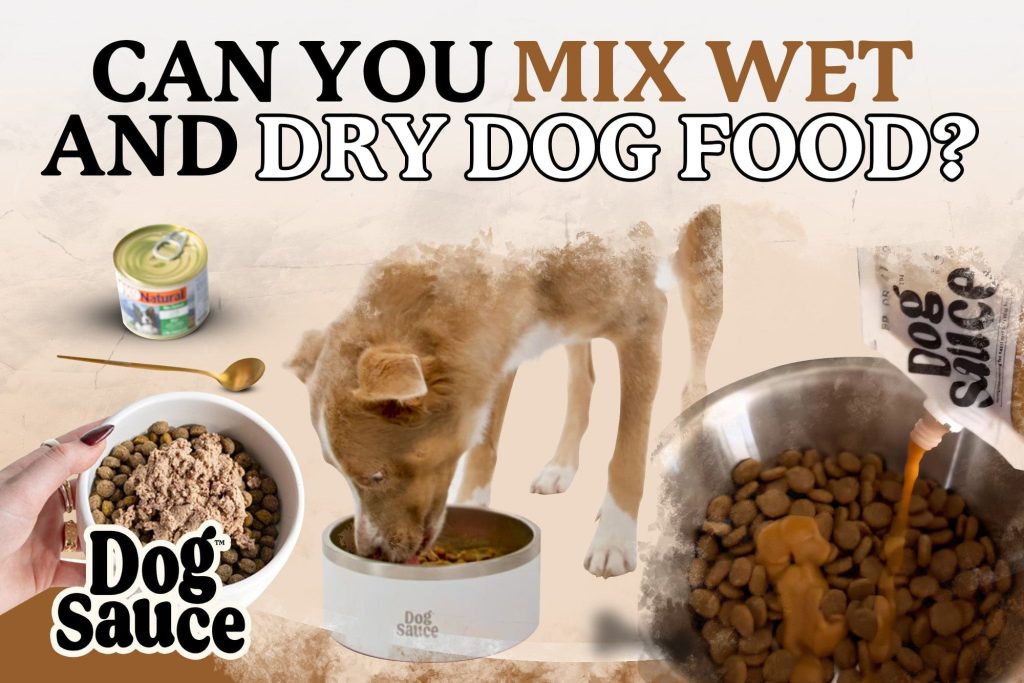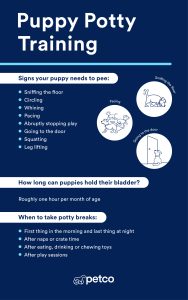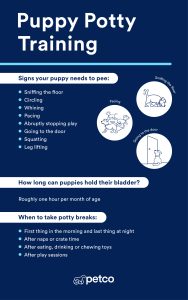Are you wondering if it’s okay to mix puppy food with adult dog food? If your furry friend is growing up or you have dogs of different ages, this question probably crosses your mind.
You want to give your dog the best nutrition without making mistakes that could affect their health. Mixing foods might seem simple, but it can have surprising effects on your dog’s digestion and energy. Keep reading to find out what you need to know before combining these two types of dog food and how to do it right for your pet’s well-being.

Credit: www.chewy.com
Differences Between Puppy And Adult Dog Food
Puppies and adult dogs need different types of food. Their bodies grow and work in unique ways.
Choosing the right food helps dogs stay healthy at every age. Mixing foods can be confusing.
Nutritional Needs By Age
Puppies need more nutrients to grow strong. Adult dogs need balanced food to keep healthy weight.
Growth needs vitamins and minerals that support bones and muscles. Adults need maintenance nutrients.
- Puppies need more calcium and phosphorus
- Adults need fewer calories but more fiber
- Puppies require DHA for brain development
- Adults need antioxidants for immune support
Ingredients Variations
Puppy food has ingredients to support fast growth and energy. Adult food focuses on healthy digestion.
Some ingredients in puppy food help build strong bones. Adult food may include ingredients for joint health.
- Puppy food often has added DHA and EPA
- Adult food may have glucosamine and chondroitin
- Protein sources are similar but amounts differ
- Fiber levels are higher in adult dog food
Calorie And Protein Content
Puppies need more calories per pound than adult dogs. Protein content is also higher to support growth.
Adult dogs need fewer calories to avoid weight gain. Protein helps maintain muscle but in lower amounts.
| Food Type | Calorie Content | Protein Content |
|---|---|---|
| Puppy Food | High (to support growth) | High (22%-32%) |
| Adult Dog Food | Moderate (to maintain weight) | Moderate (18%-25%) |

Credit: www.purina.com
When Mixing Makes Sense
Mixing puppy food with adult dog food is sometimes helpful. It depends on your dog’s needs and situation. Knowing when to mix can keep your dog healthy and happy.
This guide explains three common reasons to mix dog foods. Each reason has tips to do it safely and effectively.
Transitioning Between Life Stages
Puppies grow fast and need more nutrients. Adult dogs have different needs. Mixing foods helps during the switch.
- Start with mostly puppy food
- Add a small amount of adult food
- Slowly increase adult food over 7-10 days
- Watch for any stomach upset
- Stop mixing once fully transitioned
Managing Picky Eaters
Some dogs refuse to eat one type of food. Mixing puppy and adult food can make meals tastier and more appealing.
| Reason | Mixing Tip |
|---|---|
| Texture Issues | Mix crunchy adult kibble with softer puppy food |
| Flavor Problems | Combine different flavors to increase interest |
| Meal Boredom | Alternate food types each meal or mix in small amounts |
Adjusting To Health Conditions
Health problems may require special diets. Mixing foods lets you balance nutrition and medication needs.
- Consult your vet before mixing foods
- Mix vet-prescribed food with regular food in small amounts
- Observe your dog’s reaction to the mix
- Adjust mix ratio as advised by your vet
- Ensure fresh water is always available
How To Mix Puppy And Adult Food Safely
Mixing puppy food with adult dog food can help during the transition phase. It ensures your dog gets the right nutrients as they grow.
It is important to do this safely. Sudden changes can upset your dog’s stomach or cause digestive problems.
Gradual Introduction Tips
Start by mixing a small amount of adult food with puppy food. Increase the adult food slowly over several days.
This helps your dog adjust to the new taste and nutrients. Watch for any signs of discomfort or refusal to eat.
- Mix 25% adult food with 75% puppy food at first
- After 3 days, change to 50% adult and 50% puppy food
- Then move to 75% adult food with 25% puppy food
- Finally, feed only adult dog food
Proper Portion Sizes
Make sure to feed the right amount of food. Both puppy and adult foods have different calorie levels.
Follow the feeding guidelines on the packages. Adjust portions based on your dog’s size, age, and activity level.
- Measure food accurately with a cup or scale
- Feed smaller, frequent meals if needed
- Do not overfeed to avoid weight gain
Monitoring Digestive Reactions
Watch your dog for signs of digestive problems during the mix. Look for diarrhea, vomiting, or loss of appetite.
If your dog shows any symptoms, slow down the transition or stop mixing foods. Consult your vet if problems continue.
- Check your dog’s stool for changes in consistency
- Observe for gas or bloating
- Note any changes in energy or behavior
Potential Risks Of Mixing Foods
Mixing puppy food with adult dog food may seem convenient. It can cause some health problems for your dog.
Knowing the risks helps you make better choices for your pet’s diet.
Nutritional Imbalances
Puppy food has more nutrients to support growth. Adult dog food has fewer calories and different nutrient levels.
Mixing them can cause your dog to get too much or too little of certain nutrients. This can affect their health.
- Too many calories may cause weight gain
- Too few vitamins can slow growth in puppies
- Unbalanced minerals may harm bones and organs
Allergic Reactions
Different dog foods use various ingredients. Mixing foods may expose your dog to allergens.
New ingredients can cause skin problems or upset stomachs. Watch for signs of allergies carefully.
- Itching and redness on skin
- Vomiting or diarrhea
- Excessive licking or scratching
Overfeeding Concerns
Mixing foods can make it hard to measure the right amount. Your dog may eat more calories than needed.
Overfeeding can lead to obesity and related health issues. Keep portions balanced to avoid these problems.
- Use a proper measuring cup
- Check feeding guidelines on both foods
- Adjust portions based on your dog’s weight
Alternatives To Mixing Foods
Mixing puppy food with adult dog food may seem easy. But it can cause problems for your dog’s health. There are better ways to change your dog’s diet safely.
These alternatives help your dog get the right nutrients. They support healthy growth and digestion without confusion.
Specialized Transition Formulas
Specialized transition formulas help dogs move from puppy to adult food. These products mix nutrients suited for both stages. They ease the change without upsetting the dog’s stomach.
These formulas often have balanced proteins and fats. They support energy and development during the switch.
- Designed to reduce digestive issues
- Balanced for growth and maintenance
- Available in dry and wet options
Consulting A Veterinarian
Always ask your veterinarian before changing your dog’s diet. They know your pet’s health needs best. A vet can recommend safe ways to switch foods.
They may suggest tests or special diets. This ensures your dog stays healthy during food changes.
- Check for allergies or sensitivities
- Get advice on portion sizes
- Learn about nutrient needs by age
Custom Diet Plans
Custom diet plans are made for your dog’s specific needs. A pet nutritionist or vet creates these plans. They balance nutrients for your dog’s age and health.
Custom plans avoid mixing foods without a clear guide. They help keep your dog’s diet steady and healthy.
- Tailored to weight, breed, and activity
- Can include homemade or commercial foods
- Monitor progress with regular checkups

Credit: www.justfoodfordogs.com
Best Practices For Feeding Puppies And Adults Together
Feeding puppies and adult dogs together needs care. Their diets are different, so mixing foods requires attention.
Understanding their needs helps keep both healthy. Here are some best practices to follow.
Separate Feeding Areas
Dogs need their own space to eat. Separate feeding areas help avoid fights and stress.
This also makes sure each dog gets the right food. Puppies need more nutrients than adults.
- Feed puppies in a quiet corner
- Keep adult dogs’ bowls in another room
- Use barriers if needed
Feeding Schedules
Regular schedules help dogs know when to eat. Puppies eat more often than adult dogs.
Plan different times for feeding. This helps manage their energy and growth.
- Feed puppies 3-4 times a day
- Adults can eat twice a day
- Adjust times as puppies grow
Monitoring Growth And Health
Watch your puppy’s growth and health. Regular checks are important.
Look for signs of proper growth and adjust food as needed. Consult a vet if unsure.
| Growth Signs | What to Do |
| Steady weight gain | Continue current diet |
| Weight loss | Consult vet for changes |
| Healthy coat | Maintain feeding routine |
Frequently Asked Questions
Can I Mix Puppy Food With Adult Dog Food Safely?
Yes, you can mix puppy and adult dog food safely in small amounts. However, consult your vet to ensure balanced nutrition for your dog’s age and health needs.
When Should I Stop Feeding Puppy Food To My Dog?
Stop feeding puppy food once your dog reaches about 12 months old. Transition to adult food supports proper growth and maintains a healthy weight.
Does Mixing Foods Affect My Dog’s Digestion?
Mixing puppy and adult foods may cause mild digestive upset. Introduce changes gradually to help your dog’s stomach adjust smoothly and avoid discomfort.
Will Mixing Foods Provide Balanced Nutrition For Dogs?
Mixing foods can unbalance nutrition since puppy and adult diets differ. Ensure your dog receives all essential nutrients by consulting your vet.
Conclusion
Mixing puppy food with adult dog food can work in some cases. Always watch your dog’s health and energy levels closely. Puppies need more nutrients for growth. Adult dogs need balanced food for maintenance. Consult your vet before changing diets.
Keep portions small and transition slowly. This helps avoid stomach problems and keeps dogs happy. Feeding the right food supports a strong, healthy pet. Remember, each dog is different and needs special care. Choose wisely for your dog’s best health and happiness.

Emily Barker is the founder of ChillDogLife.com, a space dedicated to helping pup parents discover the best dog products, lifestyle tips, and cozy ideas for happier homes.
A lifelong dog lover, Emily combines her passion for pets with a knack for research to share trusted recommendations on everything from toys and furniture to health and everyday care.
Her goal is simple: to make life easier, stylish, and more joyful for dogs and the people who love them.







